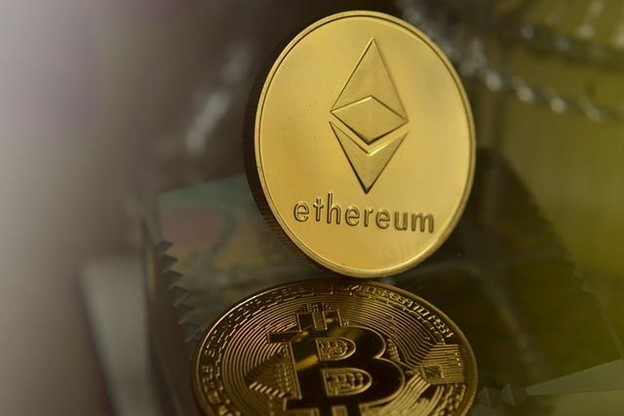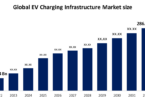Similar to other investments, NFTs have shortcomings, such as oversaturated markets and high gas prices, but they also have some remarkable breakthroughs. They’re the safest way to store digital assets and information, to be more precise. There have been financial gains in the NFT space, but innovation occurs where token prices have little to do with the NFT creation process. Collectors have become prominent Web3 builders, and life has changed owing to blockchain technology. As we move on, we’ll undoubtedly see real-world use cases that matter. The NFT market is witnessing a contraction in 2023, but activity remains higher than the lows of November 2022.

Most NFT projects are priced in ETH, whose price rapidly swings up and down. There’s little correlation between NFTs and Ethereum regarding prices and sales volumes. In other words, NFTs sometimes track the movement of ETH, but not always. To buy an NFT, you need Ethereum and a digital wallet to store both. Binance is a top-rated provider giving you access to 350+ cryptocurrencies. This does, of course, include ETH. The live price of Ethereum is $ 1,881.07 per ETH/USD. Ethereum remains the dominant NFT platform as far as trading volume and overall value are concerned, but it’s not a prerequisite for creating NFTs. Other blockchains, like Bitcoin, can be used to mint or create NFTs.
Traders Can Transfer Their ERC-721 NFTs to Ordinals
Bitcoin, often referred to as the “king” or “firstborn” cryptocurrency, has entered the NFT space through the rise of the Ordinals protocol, which allows for each individual Satoshi to be identified and transacted with additional data attached via inscription. The piece of information makes the Satoshi unique and transforms it into a de facto NFT. Ordinals are stored on the Bitcoin network. In the beginning, blockchains were created to do everything separately. Nevertheless, with the popularity of NFTs, there’s an urgent need for interoperability between different chains. Ordinals Market, the number one marketplace for trading NFTs and NFT collection Miladys, recently published the BRC-721E token standard that enables the conversion of Ethereum NFTs to Ordinals.
Simply put, the BRC-721E token standard is a new protocol that enables the bridge of data to Bitcoin via Ordinals. It works by burning ERC-721 NFTs on the Ethereum network with an ETH call function and transferring them to inscriptions on the Bitcoin blockchain. The process is irreversible. For Ethereum NFTs to be migrated to Bitcoin, it’s imperative to inscribe valid BRC-721E data. Soon enough, a bridged NFT will appear on a bespoke Ordinals market collection page (with complete metadata). The original ERC-721 NFT is sent to an out-of-reach “burn” address, which translates into the fact that it’s completely destroyed on the chain. The digital asset is transmuted on the Bitcoin network by virtue of the Ordinals protocol.
Attention must be paid to the fact that the BRC-721E token standard is in the early stages, so it’s not perfect. Ideally, traders should be able to send and receive NFTs across multiple blockchain platforms without the help of third-party bridge software. As far as technology is concerned, nobody should live under the illusion that it’s perfect, even if it’s the future of NFTs. The BRC-721E process is a one-way journey in which the original NFT is destroyed. Ordinals might give NFTs more value, but there are some risks to switching blockchains, such as loss of ownership. Bridges are managed by centralized, third-party entities, so you must ensure you’re using a trusted platform.
The BRC-721E token standard is much like the ERC-721 standard on the Ethereum blockchain in the sense that it provides a secure way to verify, manage, store, and transfer collectibles. At any rate, the new token protocol evolved from BRC-20, which uses Ordinal inscriptions to make possible minting and transfer facilities of fungible tokens on the Bitcoin blockchain. Even if the NFTs are transferred, the data isn’t stored on-chain initially but on the marketplace collection page. A preview is available in the wallet, although it’s low-quality. The BRC-721E protocol will be widely used by all crypto users in the days to come, moving their projects from the Ethereum blockchain to the Bitcoin Ordinal protocol.
Bitcoin Ordinals Have Received Enormous Attention from Cryptocurrency Investors
When you’re on an NFT marketplace built on a certain blockchain, you must buy and sell NFTs that are minted on that specific blockchain. The problem is that countless NFTs are in circulation, and there’s a lack of interoperability among blockchains. A bridge helps collectors move their favorite digital collectibles across blockchains by initiating a bridging contract that acts as a single on-chain inscription request. It’s necessary to set up an account and connect your wallet. BRC-721E’s execution follows the launch of the Ordinals Inscriptions protocol on January 21. The Ordinals protocol enables people to inscribe media such as artwork, profile pictures, and even functional apps and games.
The crypto community has witnessed the launch of numerous BRC20-tokens, such as Pepecoin and Vmpx. Programmer Casey Rodarmo created Bitcoin Ordinals as a way to inscribe a piece of art on the blockchain that would be entirely immutable. Satoshi included references to something called “atoms” in the original Bitcoin codebase – it’s from here that the Ordinal theory came to light. Ordinal Inscriptions started in the middle of December 2022, but they didn’t catch on until January 2023. The difference between Bitcoin Ordinals and NFTs found on Ethereum is that Ordinals are stored on the Bitcoin network, while ERC-721 NFTs are stored in third-party databases.
Bitcoin Ordinals have risen to the second place as regards NFT sales per blockchain, which is an impressive achievement taking into account the fact that they recently burst onto the market. More than 10 million inscriptions have been made until now, largely motivated by the rise of meme tokens. For the sake of clarification, meme tokens are supported by enthusiastic online traders and followers; they’re identified with animated characters or animal meme images. The rise of Bitcoin Ordinals hasn’t been well-received, with many opponents criticizing the new method, labeling it inefficient and wasteful. It’s believed they will lead to increased Bitcoin transaction fees for all network users.
Conclusion
Now, the gap between Bitcoin and Ethereum is much narrower, owing to the BRC-721E token standard. Ethereum’s ERC-721-based non-fungible tokens can be transferred onto the BTC blockchain without much difficulty.







Leave a Comment
You must be logged in to post a comment.